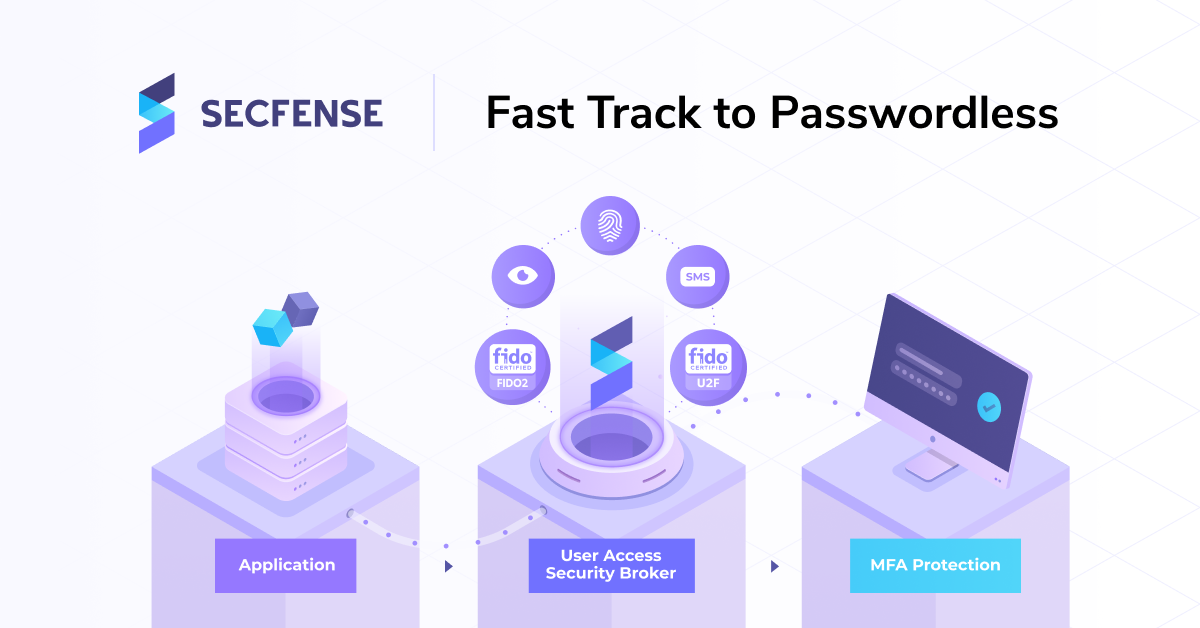Secfense helps banks introduce and scale strong authentication on all the apps so that no user account gets taken over. Secfense User Authentication Broker has recently protected nearly 100 banking apps in one of the top 5 biggest banks in Poland. The implementation took just a couple of weeks and there was no coding involved. Here’s a bit more about this implementation:
Initial state:
- several physical data centers and private cloud applications
- the bank controls traffic to the application
- F5 load balancers are involved in the movement
- a large part of the application is included in SSO, where the Kerberos protocol plays an important role
- Microsoft MFA is used in a local installation with the possibility of transferring to Azure (RADIUS plays an important role here)
Objective:
- protecting nearly 100 web applications with two-factor authentication (2FA)
- Taking advantage of an existing Microsoft MFA server
- Taking advantage of an existing SSO (in the passwordless login process + additional authentication with 2FA)
Strong Authentication Implementation:
This is a fully repeatable process that starts with PoC.
- PoC usually lasts about 1 month and its goal is to ensure that Secfense will work well with already installed technology in terms of user authentication.
- Self implementation is possible on physical or virtual appliances or directly in a container environment.
- The deployment on about 100 applications takes several weeks. During this time, Secfense takes into account adaptations to individual requirements, such as:
- implementation of corporate identity.
- categorization of applications and users as well as assigning individual authentication policies for them.
- All other non-standard requests to fit additional client requirements.
Strong Authentication Deployment Process
The very implementation of Secfense clusters comes down to installing physical or virtual appliances in various data centers and cloud instances where applications are hosted.
In the next step, a rule is defined on the load balancers that will direct user traffic to the application in such a way that it goes through Secfense nodes.
Secfense nodes in conjunction with the functionality of load balancers have built-in mechanisms that enable disabling each of them, guaranteeing the continuity of the authentication processes with the other component.
Updating them is also completely uninterrupted.
The video below is an example of how Secfense implementation actually looks like. The demo is performed on Amazon (to show that we don’t need to know the application code to be able to add strong authentication to it. Amazon’s case is only to illustrate the deployment process. In the case of real implementation, Secfense is placed between the user and the application in the form of a physical or virtual appliance.
